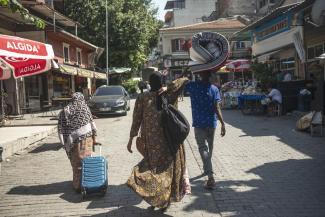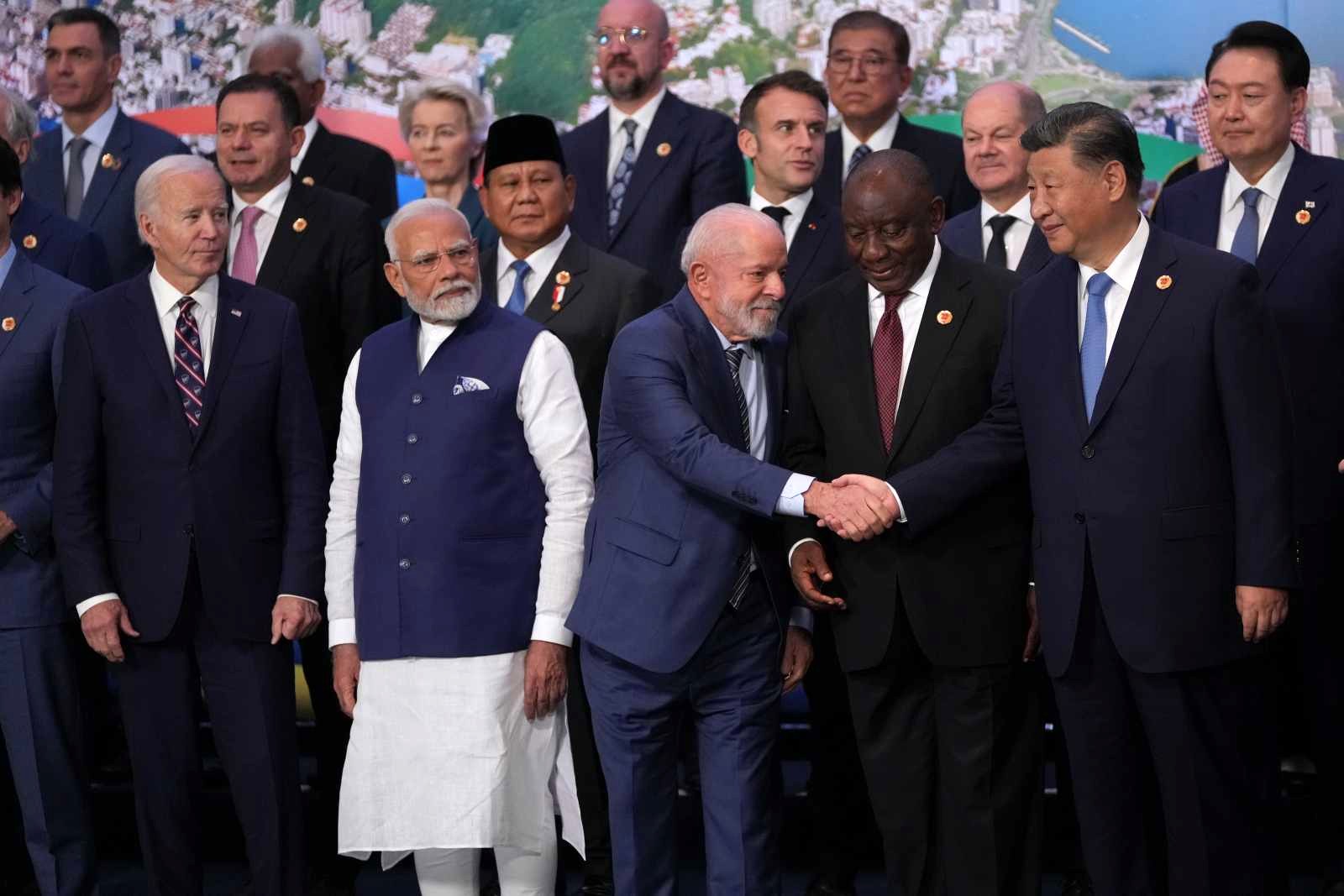Social policy
Social-protection systems reduce causes of displacement

At the end of 2020, the UN Refugee Agency (UNHCR) reported that the number forcibly displaced people in the world was once again higher than at any pervious time in the agency’s history. Displacement poses challenges, and to permit an appropriate response, the international community has agreed on the Humanitarian-Development-Peace Nexus (HDP Nexus). The guiding idea is to interlink humanitarian assistance, development cooperation and peacebuilding more closely.
The UN Global Compact on Refugees, which was adopted in 2018, supports this approach. It distributes responsibilities more equitably within the international community. A core aspect is to create longer-term prospects for both the local population and refugees in the often very poor host regions, rather than addressing their needs through parallel systems.
It is necessary to scale up efforts through better social-protection systems. For different states to cope with poverty, conflict and crises government departments must work better together on designing and implementing sustainable responses. Adaptive social protection is a promising approach, which is attracting growing attention. One reason is that, in the Covid-19 crisis, pre-established social-protection systems have proven crucial for supporting a large variety of population groups.
Protecting people from poverty and humanitarian crises
“Social protection” consists of policies and programmes designed to ensure that people suffer neither poverty nor social exclusion. The focus is on vulnerable groups. Social-protection systems offer support to individuals, for example in the case of illness or unemployment. However, they can also be helpful in collective crises. In the event of a disaster, for example, a government can relax eligibility rules of an existing social benefits scheme. Another option is to increase the level of support in times of crises. If systems are able to adjust to a changing environment, we speak of adaptive social protection.
Adaptive social protection systems can reduce poverty, decrease inequalities and protect people from the consequences of crises. In countries of origin, fully functional social-protection systems thus contribute to reducing root causes of displacement. In host countries, however, the big challenge is to expand social-protection systems in ways that allow them to serve newly-arrived displaced persons. Especially in host countries with low and medium incomes, resources tend to be tight. They often do not even suffice for local people in need.
On the other hand, statehood tends to be stronger were people enjoy the support of social-protection systems (see Henning Melber on www.dandc.eu).
Adding to the problems is the unequal international distribution of refugees. Rich donor countries tend to take in a significantly smaller share than developing countries do. Moreover, they do not always comply with the 1951 Refugee Convention – just consider the debate on the pushbacks of asylum seekers at the EU's external borders (see interview with Gerald Knaus on www.dandc.eu).
Accordingly, rich industrialised countries find themselves accused of double standards. At the same time, governments of developing countries run considerable political and economic risks when they accept refugees.
International actors, including the World Bank and UNHCR as well as several donor countries, are focusing increasingly on adaptive social-protection systems. The preconditions are that the state concerned is not party to the conflict and grants access to social protection services without discrimination. Scarce resources will generally be distributed more cost-effectively if existing national systems are used for displaced persons. Creating parallel systems is normally more expensive. Moreover, using a single system facilitates new-comers’ long-term integration.
Linking social protection to humanitarian assistance
Where host countries are overburdened, stronger social-protection systems are a prime requirement and deserve international support. To provide needs-based assistance to more people, the system’s base must be robust. In turn, an effective system can contribute to mitigating causes of displacement. It will also facilitate cooperation of many different parties involved in providing support. Donors can provide funding, for example, while national agencies take charge of registration and data management. An EU-funded programme operating along such lines in Turkey is currently providing support to more than 1.5 million refugees per month.
If a social-protection system is to work well for forcibly displaced persons, it must be geared to different target groups with diverging needs. Contracts with financial-service providers, for example, need to be designed in ways that allow disbursements to be increased and decreased flexibly. Programmes must also spell out clearly what proof of identity is required for receiving benefits and what alternatives are acceptable when persons have lost those documents. Reachability matters too. More than half of all refugees are accommodated in urban areas, often in informal settlements. Local authorities and international agencies often struggle to get in touch with them.
Social, political and economic conditions vary considerably from one country to another. The devil is thus in the details. However, if the actors keep the political-economic circumstances in mind and succeed in building bridges between different resorts, sectors and systems, adaptive social-protection systems can help to reduce the causes and consequences of displacement in the long term.
Literature
UNHCR Global Trends – Forced Displacement in 2020:
https://www.unhcr.org/60b638e37/unhcr-global-trends-2020
Bericht der Fachkommission Fluchtursachen der Bundesregierung, 2021: Krisen vorbeugen, Perspektiven schaffen, Menschen schützen. Frankfurt am Main.
Preventing Crises, Creating Prospects, Protecting People – Summary of the Report of the Commission on the Root Causes of Displacement
https://www.fachkommission-fluchtursachen.de/fileadmin/user_upload/pdfs/Root_Causes_Displacement_Report-Summary.pdf
Maren Suchta-Platzmann is a political scientist and works as an adviser on social-protection issues for GIZ.
maren.suchta-platzmann@giz.de
Amédé Schmitz is a social scientist specialised in international migration and forced displacement . He works as an advisor on displacement for GIZ.
amede.schmitz@giz.de













